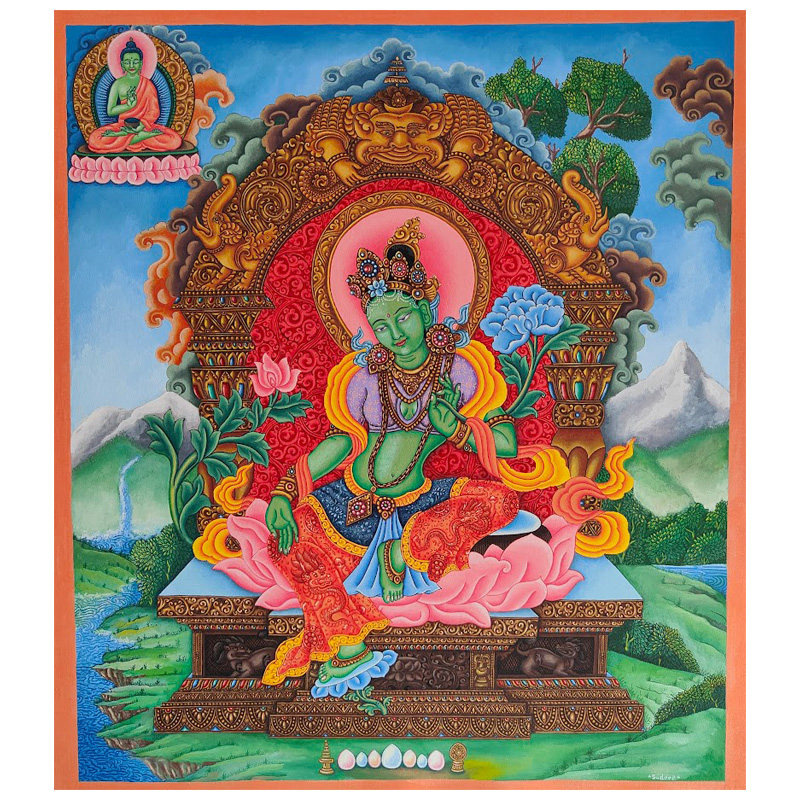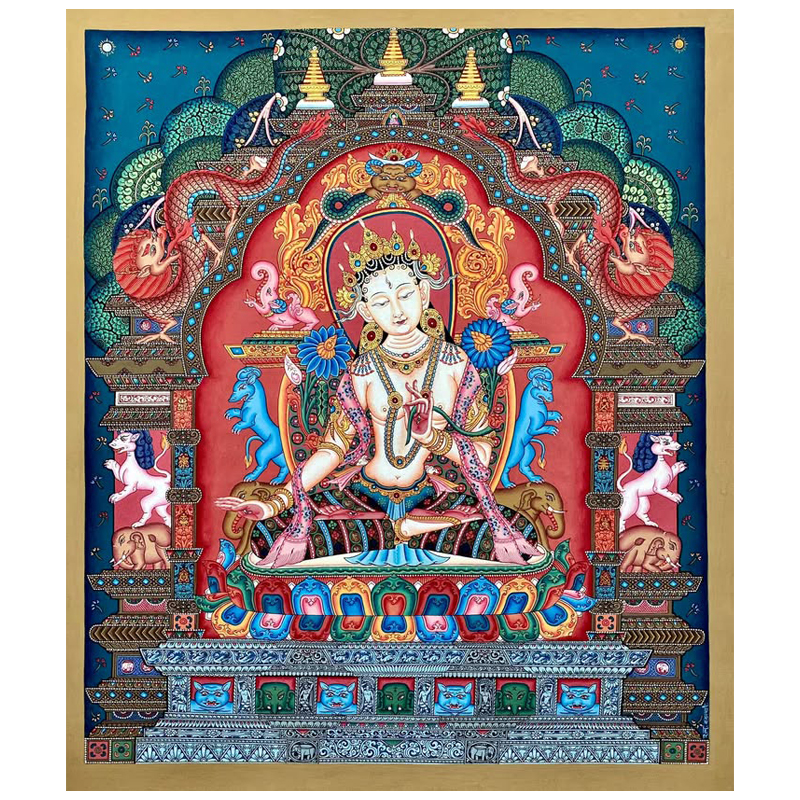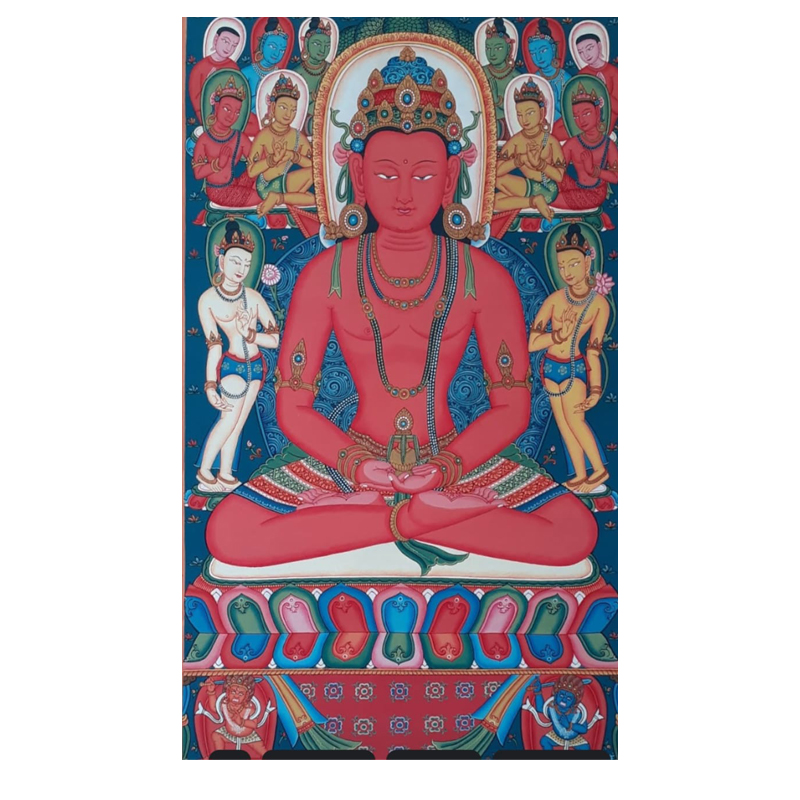

Green Tara, also known as Syamatara, is one of the most revered goddesses in Tibetan Buddhism and is considered a compassionate savior and protector. She embodies the feminine aspect of enlightenment and is believed to help overcome fear, obstacles, and suffering.
1. Symbolism and Attributes
- Color Green: The green color symbolizes activity and vitality. Green Tara is associated with swift action and is believed to come to the aid of those in distress instantly.
- Compassion and Protection: She is a manifestation of compassion in action, offering relief to her devotees from physical, mental, and emotional suffering.
- Lotus Seat: Green Tara is often depicted sitting on a lotus, symbolizing purity and enlightenment amidst worldly challenges.
- Hand Gestures:
- Her right hand is extended downward in the gesture of giving (varada mudra), symbolizing her generosity and readiness to help.
- Her left hand is raised with her fingers in the gesture of refuge (abhaya mudra), holding a blue lotus (utpala) that represents purity and wisdom.
2. Iconography
- Green Tara is typically shown as a youthful and beautiful goddess with a compassionate expression.
- She wears elegant silk robes, jeweled ornaments, and a crown, indicating her divine status.
- Her right leg is slightly extended, signifying her readiness to spring into action to help devotees.
- Her seated posture, often half-lotus, reflects a balance between meditation and action.
3. Origins and Mythology
- Bodhisattva Tara: Tara originated from Avalokiteshvara, the Bodhisattva of Compassion. It is said that when he shed tears of compassion for the suffering beings, a lotus blossomed from his tears, and Tara was born.
- Two Aspects of Tara:
- Green Tara represents the active, dynamic, and protective side.
- White Tara represents her serene and nurturing side.
4. Mantra
The mantra of Green Tara is:
"Om Tare Tuttare Ture Svaha"
This powerful mantra is believed to invoke her blessings, remove obstacles, and provide protection.
5. Role and Worship
- Green Tara is worshipped as a protector from the eight great fears, including fear of lions (pride), elephants (ignorance), snakes (jealousy), fire (anger), water (attachment), demons (delusion), thieves (wrong views), and imprisonment (greed).
- She is also regarded as a liberator, helping her devotees overcome emotional and physical challenges to attain spiritual enlightenment.
6. Artistic Representation
- Green Tara is a popular subject in Tibetan Thangka paintings and Nepalese Paubha art.
- These depictions are detailed, vibrant, and rich in symbolic elements, portraying her divine attributes and the cosmic energy she embodies.
7. Cultural Importance
- Green Tara is widely revered in Nepal, Tibet, Bhutan, and Mongolia, as well as in other Buddhist cultures.
- Her teachings and imagery reflect the universal values of compassion, courage, and active engagement in alleviating the suffering of others.
8. Modern Relevance
Green Tara remains a source of inspiration and spiritual guidance for many, embodying the principles of compassionate action and fearlessness. Devotees believe her blessings can help navigate life's challenges, promote inner peace, and foster personal growth.

